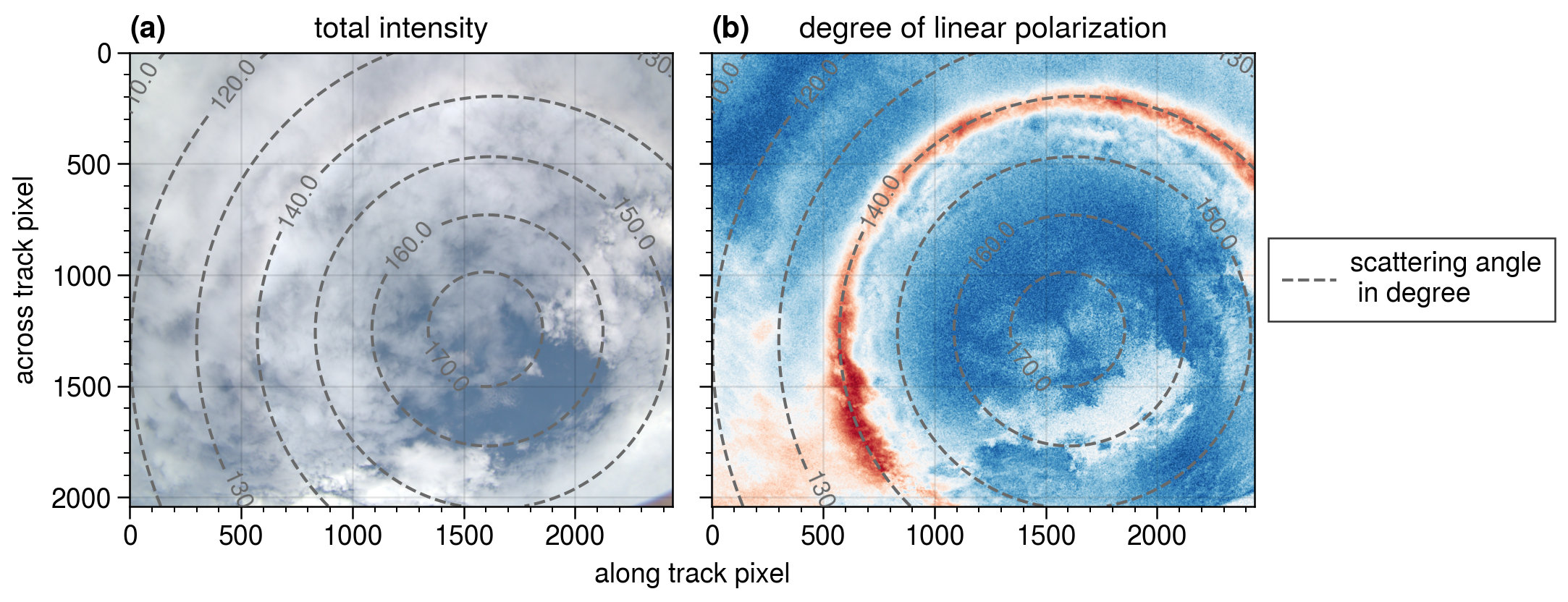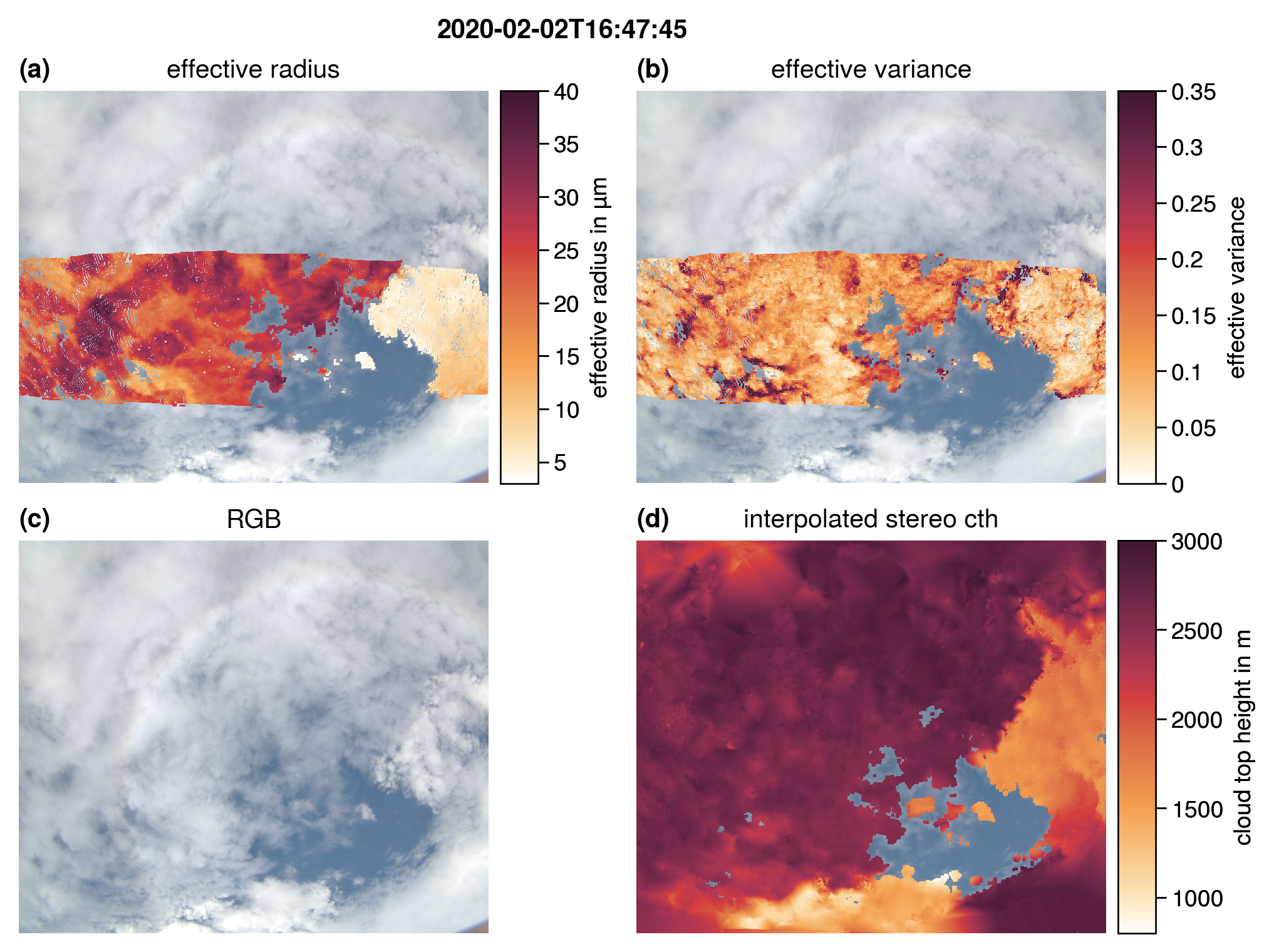The scientific value of rainbows
01.09.2023
Clouds still represent one of the largest uncertainties in climate forecasts. New and innovative observation methods of cloud observation are therefore welcome. For several years, a team from MIM has been using our own camera system specMACS in aircraft measurement campaigns for this purpose. specMACS is installed in the German research aircraft HALO and observes clouds from above during the research flights. The instrument consists of two spectral cameras and two polarization cameras.

The use of polarization measurements has been gaining popularity for several years, as they allow direct and robust remote analysis of cloud particles. One way to gain information is the detailed analysis of the rainbow or the cloudbow. In polarization measurements, the cloudbow is much better visible. It is formed by scattering of sunlight by liquid water droplets. The upper image shows a specMACS measurement of a cloudbow. The image on the left shows the measured brightness as an observer would see it by eye. The cloudbow is barely visible. The right image shows the degree of polarization, and there the cloudbow is clearly visible at a scattering angle of 140°. The size, shape and intensity of the cloudbow depends on the droplet size distribution in the cloud. Observed cloudbows can be compared to simulations and the size distribution of the measured cloud droplets can be dertermined this way. We have used this method to derive the droplet size distribution from specMACS data from the EUREC4A campaign (Barbados, 2020). The droplet size distribution has an important influence on the radiative effect of clouds and plays a major role in determining how clouds interact with radiation. The data and method were published in a study (Pörtge et al., 2023) using two case studies. The following Figure shows the derived effective radii and variances of the size distribution, as well as the stereographically determined cloud height (Kölling et al., 2019) of the same cloud scene as above.

The specMACS data provide a high-resolution, two-dimensional image of the cloud situation and the derived cloud microphysical parameters. In the future, the method will also be applied to data from other measurement campaigns. In addition, first steps have already been taken to evaluate the polarisation measurements also with regard to ice clouds.

